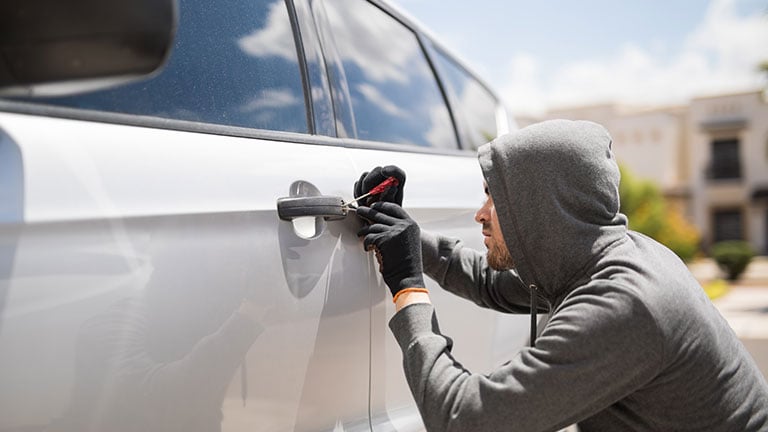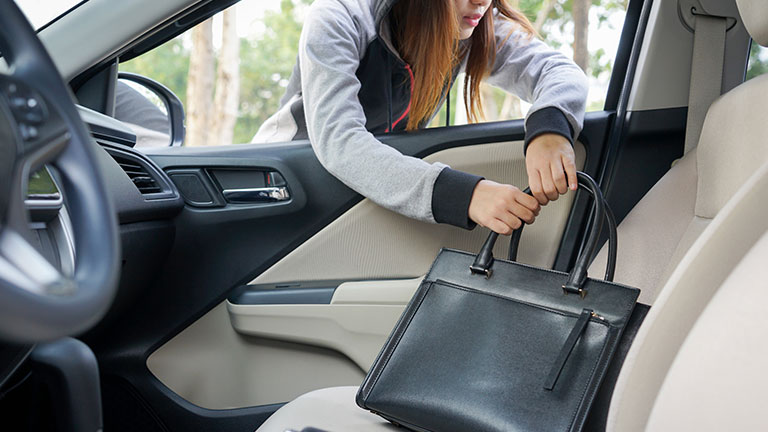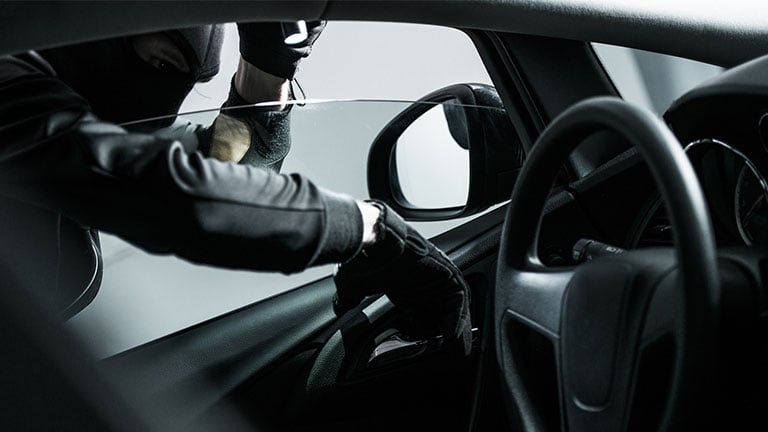Is Your Vehicle an Easy Target for Car Theft?
Avoid these 9 common mistakes that can turn your vehicle into an easy mark


Car theft is almost as old as the invention of the automobile itself. The good news is, that after years of rising sharply, car theft fell by 17 percent in 2024. The bad news is that there were still more than 850,000 cars stolen last year. In addition, more than a quarter of personal property thefts involve motor vehicles, according to FBI data.
So, how can you protect your vehicle? Start by avoiding these nine mistakes that can make a car irresistible for thieves—whether they want to take things left inside, sell the vehicle, strip it for parts, go for a joyride, or use it in another crime.

1. Leaving your car unlocked
Leaving your car unlocked is essentially an open invitation to thieves. Most aren’t looking to break windows unless they have to; an unlocked door is quieter, faster, and less suspicious. They’ll rummage through the glove box, storage compartments, areas under seats, and the trunk. With modern cars, remote trunk releases or folding rear seats often mean the trunk may not be as secure as people think.
2. Leaving your car unlocked with the keys inside
Yes, this actually happens. Nearly a quarter of a million vehicles were stolen by thieves who found the keys left inside, according to a report by the National Insurance Crime Bureau (NICB) that surveyed a three-year period (2017 to 2019).
3. Leaving your car unlocked with the engine running
Even if you’re only planning on being away for a minute or two, it would take a thief mere seconds to hop in and drive away. Shockingly, for example, Minneapolis police recently reported that in one given week, 82 percent of the 55 cars stolen the city were left unattended with the engine running.

4. Leaving valuable items inside your car in plain sight
Thieves are looking for purses, wallets, smartphones, tablets, GPS systems, or anything else that might be valuable. But it’s not just high-ticket items; they’ll break in for much less, including a charging cable or spare change left on the center console. Even an empty bag can make a vehicle a target, as thieves may assume there’s something valuable inside.

5. Not using your garage
It’s surprising how many people pack their garages with seldom-used items that have little or no market value—and then leave their car—one of their priciest assets—exposed in the driveway. If you have a garage, use it; it’s one of the simplest and most effective ways to deter motor vehicle theft.
6. Parking your car in a poorly lit area
Thieves prefer working under the cover of darkness. It helps ensure their anonymity as passersby are less likely to notice them. Parking in areas with little or no lighting increases the risk your car will be targeted. Whenever possible, choose well-lit, high-visibility parking spots, especially at night or in unfamiliar neighborhoods.

7. Ignoring your car’s inherent theft risk
Some cars are far more attractive to thieves than others, and it’s wise to know if yours is on the target list of most stolen cars.
According to the NICB, certain Hyundai and Kia models from the early 2010s have risen to the top of the list due to vulnerabilities in their ignition systems. According to the Insurance Institute for Highway Safety, the Dodge Charger SRT Hellcat has a theft claim frequency that is more than 60 times that of an average vehicle. At the other end of the scale, the Tesla Model Y and Volvo XC90 have among the lowest theft claim rates.
Owners of theft-prone cars should consider these additional precautions:
- Use a steering wheel lock.
- Install a GPS tracking device.
- Add a kill switch to prevent the engine from starting.

8. Underestimating the appeal of older cars
It may seem unlikely, but older vehicles can be very tempting targets. They often lack advanced antitheft technology, which makes them easier to steal. And their parts can be in demand, especially for discontinued models or those still on the road in large numbers. Thieves can strip older vehicles for components and sell them quickly and discreetly.
This includes vehicles with catalytic converters. If your car is a known target for catalytic converter theft, additional precautions may include installing an antitheft device on your catalytic converter and parking in a garage or well-lit area.

9. Neglecting to turn the front wheels or setting the parking brake
When parking on the street, especially on inclines, turning your front wheels toward the curb (or away if uphill) and setting the parking brake does more than prevent rolling. This practice makes it more difficult for a thief who wants to tow your car away. While it won’t stop a determined thief, it adds a layer of difficulty that could encourage them to move on to an easier target.
…..
If your car is stolen, call law enforcement and your insurer immediately. Reporting a stolen vehicle as soon as possible increases the chance of recovery.
The good news is that 85 percent of stolen cars are recovered, with 34 percent found within a day, according to the NICB. While some stolen vehicles may be damaged or involved in another crime, many are recovered quickly and in good condition. Nonetheless, taking steps to prevent car theft is still your best, most effective option.
